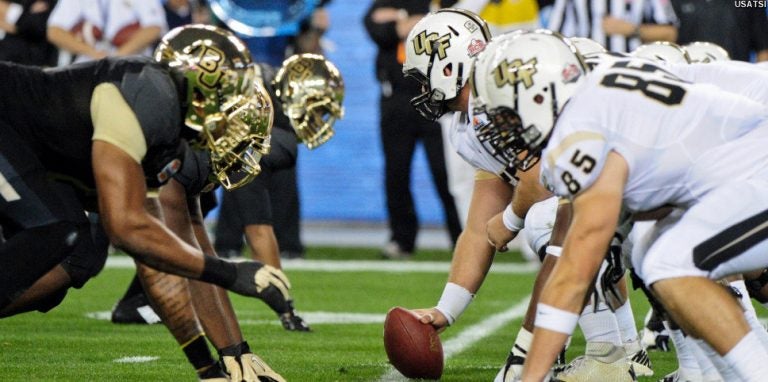According to a recent study released by The Institute for Diversity and Ethics in Sport (TIDES) at the University of Central Florida, key leadership positions at Football Bowl Subdivisions (FBS) schools are dominated by white males. The Fall 2014 report found that 74.6 percent of university presidents, 77.6 percent of athletic directors, and 100 percent of conference commissioners are held by white men. Additionally, it found whites held 88.2 percent of campus leadership positions.
This study examined race and gender for all 126 FBS institutions, including conference commissioners and campus leaders, college and university presidents, athletics directors and faculty athletics representatives in the calculations. The study further investigated specific football team faculty: head football coaches, assistant coaches, and student athletes. Results indicated an increase in the percentage of head football coaches fitting the white male demographic.
The leadership and power structure of college sport remains overwhelmingly white, said Richard Lapchick, director of TIDES and author of the study. “College sport is sadly behind professional sports with opportunities for women and people of color for the top jobs.”
Lapchick found the study “troubling” and advocates that more minority candidates be considered for coaching and leadership positions. However, he believes that there is not yet an efficient system that can give minorities the opportunity to fill these positions nationwide. Lapchick suspects that this lack of opportunity is the fault of an unvaried candidacy pool rather than purely an issue of racial prejudice.
“I think it’s more of the ‘old boys’ network’ than it is a racial thing…I think colleges have to be more creative with how they look for key jobs like these and make sure they have a diverse pool of candidates,” Lapchick added.
The study is titled Small Progress Throughout Collegiate Athletic Leadership: Assessing Diversity among Campus and Conference Leaders for Football Bowl Subdivision (FBS) Schools in the 2014-15 Academic Year. The report was published November 5, 2014 with Richard Lapchick, Ph.D., as the primary author with assistance by co-authors Drew Donovan, Juan Dominguez, John Fox, Angelica Guiao, Lizzie Haldane, Evanna Howell, April Johnson, Erika Loomer, Natalie Nelson, Leslie Martinez, Brandon Moyer, Michaela Robbins, Leroy Robinson, Diego Salas, Dionne Sanders, Maclin Simpson, Vroni Van Berlo, Andrea Yacaman, Stephens Rogers and Jonathan Pelts.
